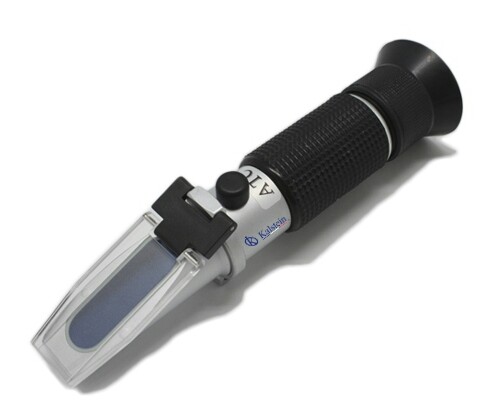The refractometer to measure water salinity
At present, salinity is usually defined as the concentration (g/L or ppt) of dissolved salts, i.e. is the amount of salt in the water, which does not depend on temperature. It should be noted that the original concept emerged around 1901, when the International Council for the Exploration of the Sea (CIE) commissioned the Danish Martin Knudsen to research the ionic properties of seawater and how it related to chloride content.
Use of the refractometer to determine sweetness in beverages
Refractometers are instruments designed to measure an optical constant called the refractive index, a characteristic of the sample and the particles dissolved in it. This is defined as the relationship between the speed of light in a vacuum and the speed of light in a substance, it is a property of the material that is not different from the boiling and melting points, but that facilitates the final identification.
How does a refractometer work?

Refractometers are optical instruments that allow determining the percentage of soluble solids in a liquid solution, making use of the principle of total refraction of light (caused by the type and concentration of substances dissolved in a liquid solution), which takes place in the boundary layer between the prism and the sample.
How does a refractometer work?
Refractometers are optical instruments used to determine the percentage of soluble solids in a liquid solution. To do this, the refractometer makes use of the principle of total refraction of light (caused by the type and concentration of substances dissolved in a liquid solution, for example sugar), which takes place in the boundary layer between the prism and the sample.
The urinary density: a useful test in children
The Urine density is a test of concentration and dilution of the kidney; it reflects the weight of the solutes in the urine measured through a refractometer. Any alteration that occurs in the urinary density is associated with damage in the concentration function of the renal tubule; its value varies throughout the day oscillating between 1,003-1,030 g/l, being higher than 1,020 in the morning due to the restriction of liquids during the night. Newborns and infants can have a urinary density between 1,005-1,010 g/l and older children 1,010-1,025 g/l.
